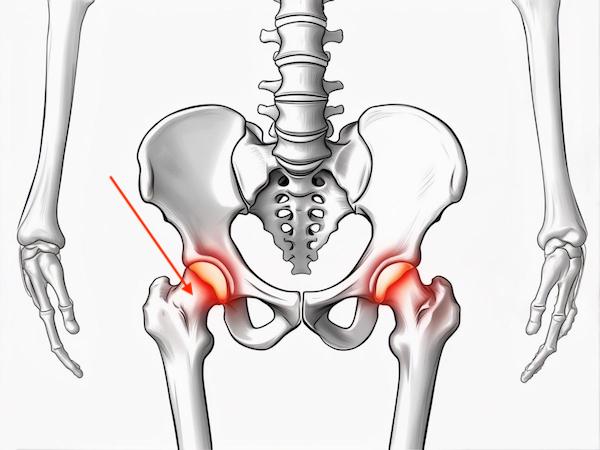Cathy's Bone Density Results
The results were back!
In one year Cathy’s FEMUR NECK (the super important bridge between the thigh bone and the head that goes into the hip socket) BONE MINERAL CONTENT (BMC) and BONE MINERAL DENSITY (BMD) increased by 19% and 12.7% respectively.
How did we get here?
It’s a long story, and it begins with seemingly bad-ish news.
Cathy is strong, and for one year she has been driving the force of 8 times her body weight back into her hips on the viiiv Leg Press, so when I saw her report showed a 7.9% decrease in her TOTAL HIP BMD I thought, “There’s no way, doesn’t make sense.”

After repeatedly staring at the numbers something jumped out at me. The site area of TOTAL HIP measured was much different: 8% less in 2024 compared to 2023.
But why?
When Cathy started her sessions at STRONG WOMEN ROCK she weighed 126 lbs with 26.5% body fat at 5'8" tall. Unfortunately, at this time she was also battling a diagnosis of EPI -- Exocrine Pancreatic Insufficiency.
Over the course of the next year, before her follow up DEXA exam, she endured an unwelcome and uncontrollable loss of weight.
It was hard to watch.
Her body weight dropped to 113 lbs (it actually bottomed out at 109 lbs after her exam) as her body fat dropped to 17%.
All the weight she lost - 13 lbs - was body fat. She was essentially starving.
On the bright side though, her lean body mass did not drop one bit and her strength continued to stay high, as she occasionally would reach new personal bests on each of the exercises.
Could her weight loss affect her DEXA results, particularly the area of site measurement?
Absolutely.
Significant changes in body composition, especially body fat, can alter the measured bone area due to the way DEXA bone mineral density scans differentiate between soft tissue and bone.
Significant fat loss can lead to the appearance of a decrease in BMD even if there is no actual bone loss due to the altered tissue distribution around the bone.
This is known as a 'measurement artifact'.
Even though, at least on paper, the BMD of the TOTAL HIP appeared to go down, the BMD of her FEMUR NECK increased!
This occurrence is not uncommon.
It can happen as a result of localized bone remodeling, which wouldn't be surprising given the large loads Cathy was putting through this structure.
Now, when there is a significant change in body composition, it can complicate interpretation of results.
So I simply looked at relative changes and calculated as a percentage of the area measured.
And that is how I arrived at the increases in BMC (19%) and BMD (12.7%) of Cathy’s FEMUR NECK.
Oh, and just for the fun of it I also calculated the BMD of her FEMUR NECK as a percentage of TOTAL HIP BMD and found that this increased by 11%.
As for that 7.9% decrease in the TOTAL HIP BMD, when expressed as a percentage of the total area measured, it was identical in both years.
So the stated 7.9% decrease was misleading. At the very least, her TOTAL HIP BMD remained stable.
Sadly, the doctor provided no further context or explanation to Cathy for this outcome, and trust me, this happens a lot.
And it leaves patients uncertain and more vulnerable to making decisions about treatment options that they would not otherwise opt for - like taking medication.
Nevertheless, Cathy obviously had a positive adaptive response in the femur neck, which is a critical area to keep strong because it is prone to fractures.
This change moved her from the osteopenia range into the normal range.
Also, let's not forget, she did this while in a starvation-like state.
Cathy has a secret weapon - the viiivPRO.
Once again, it works for making bones better.
